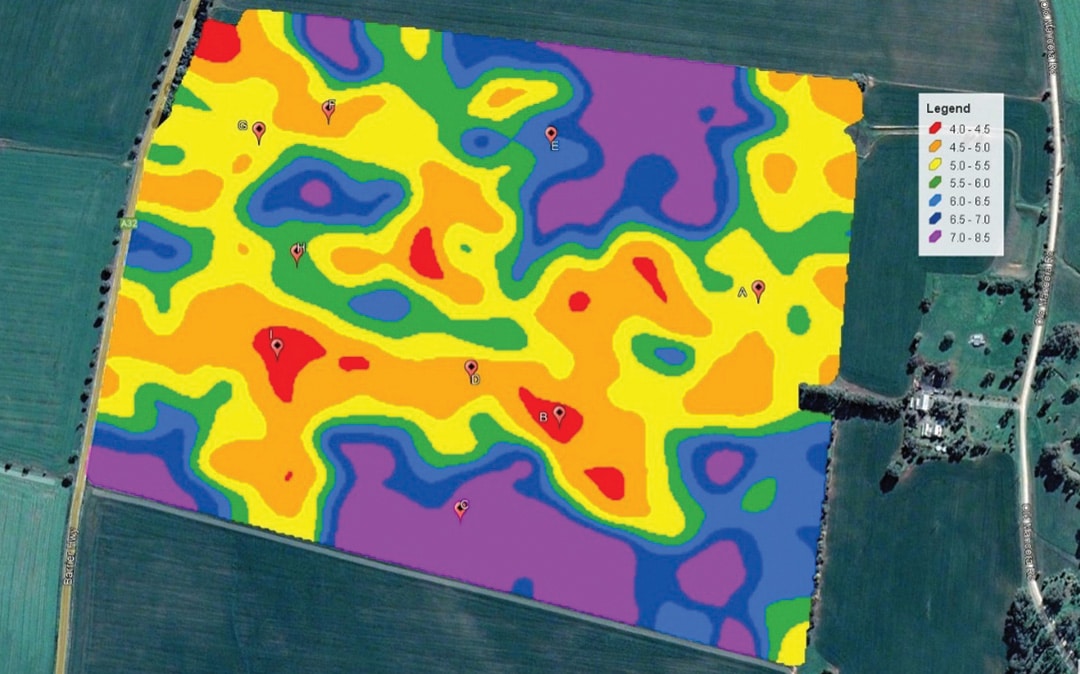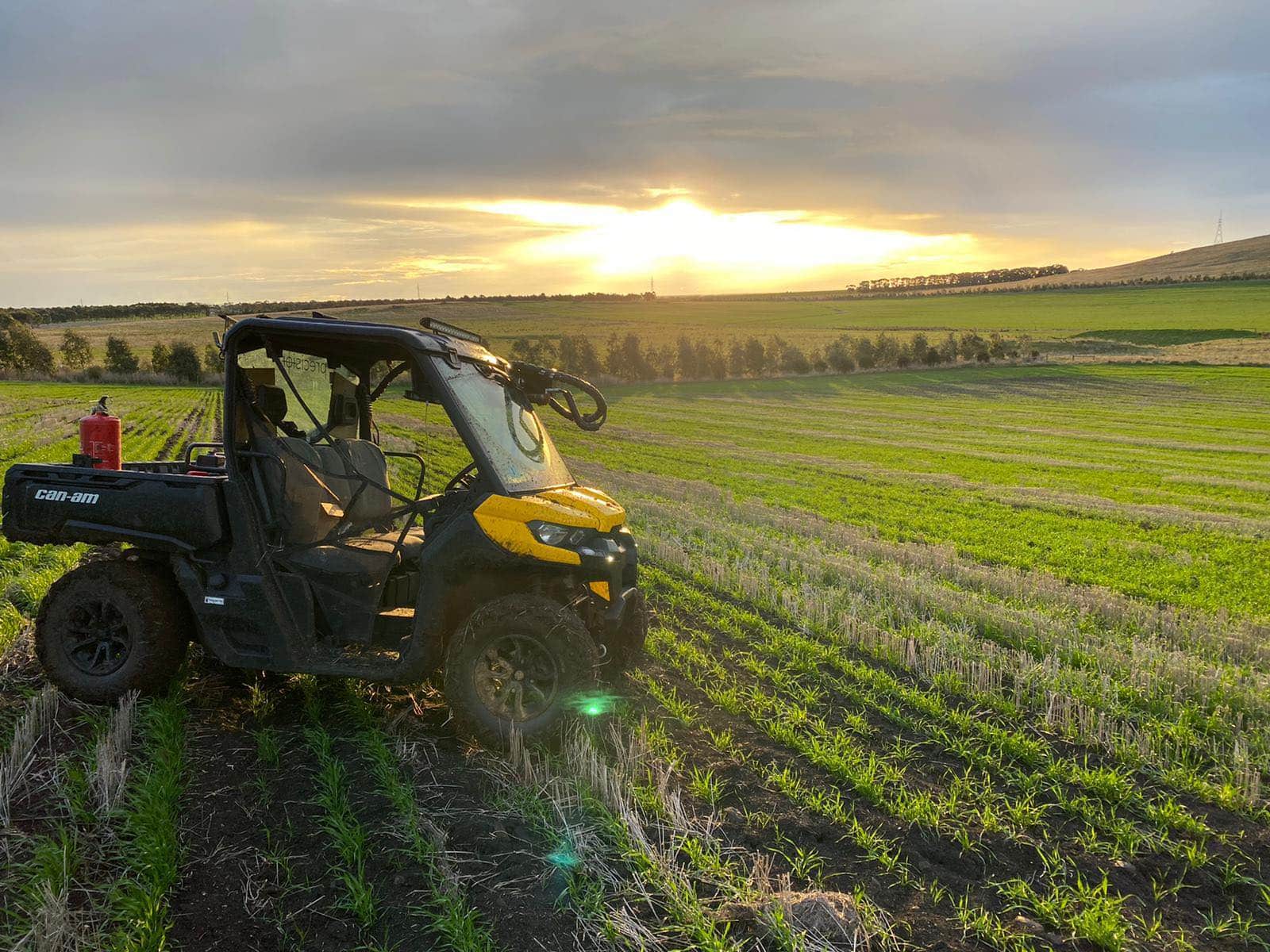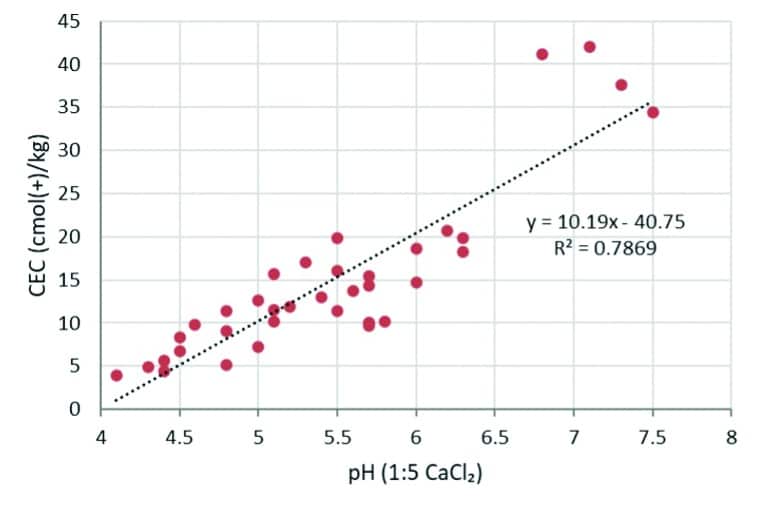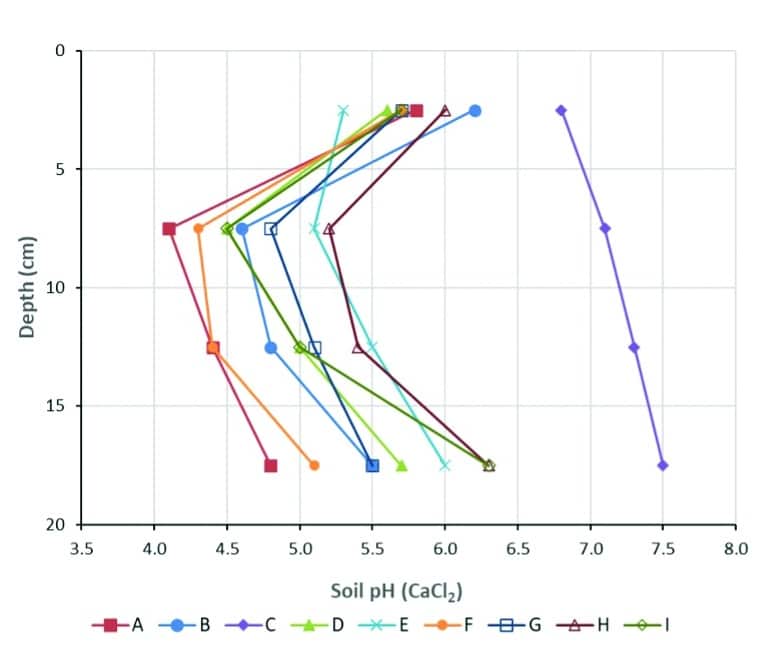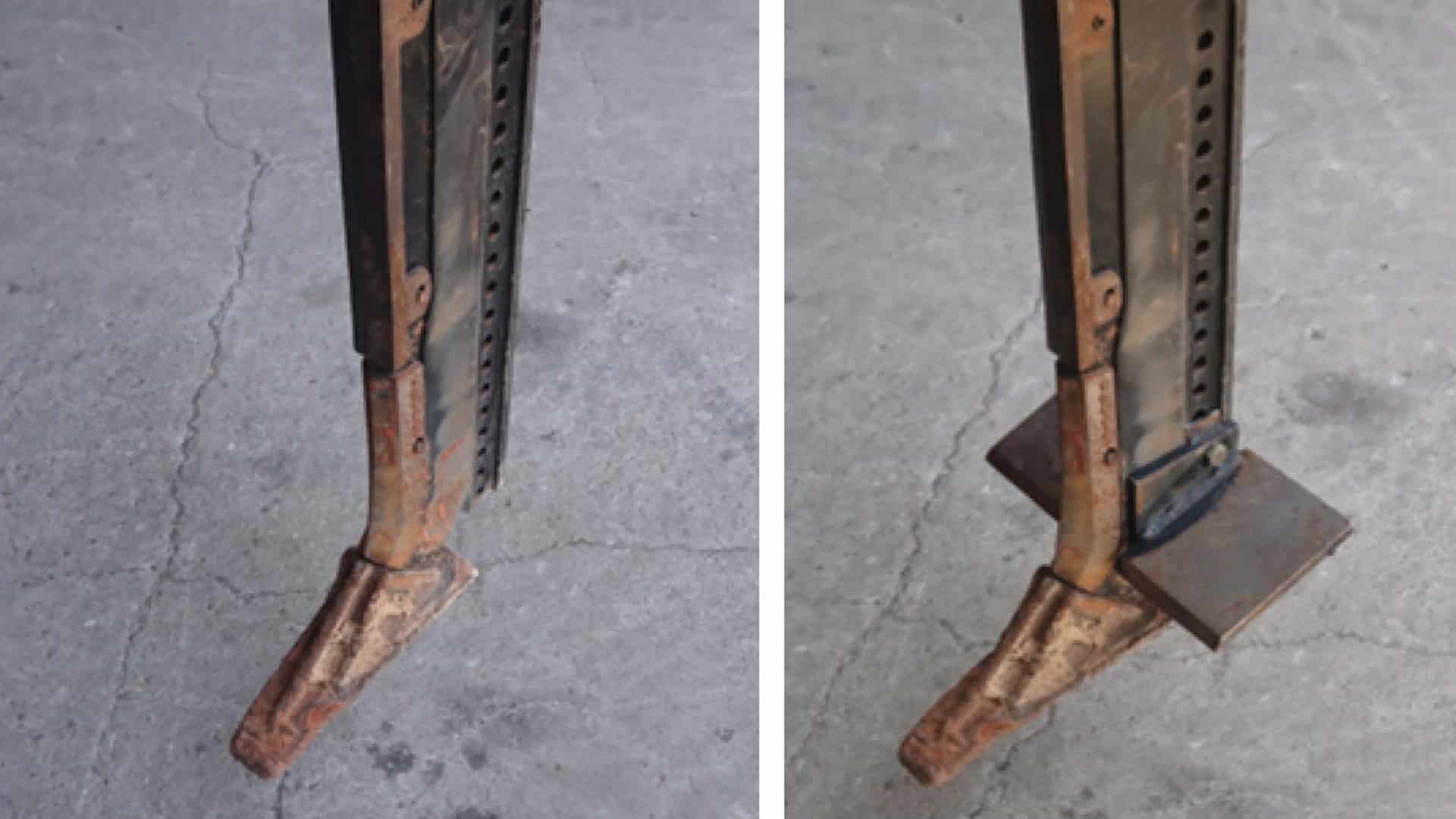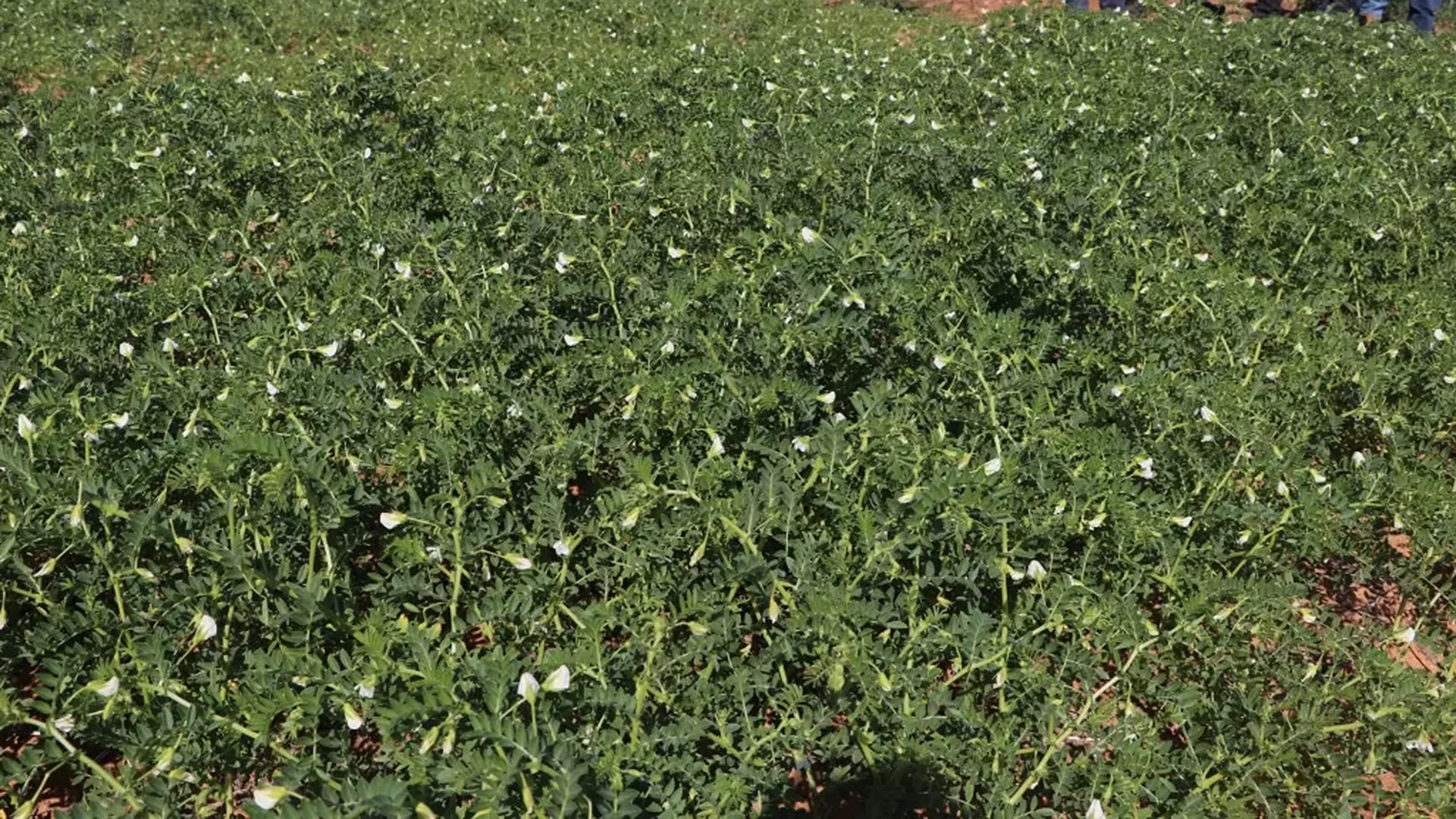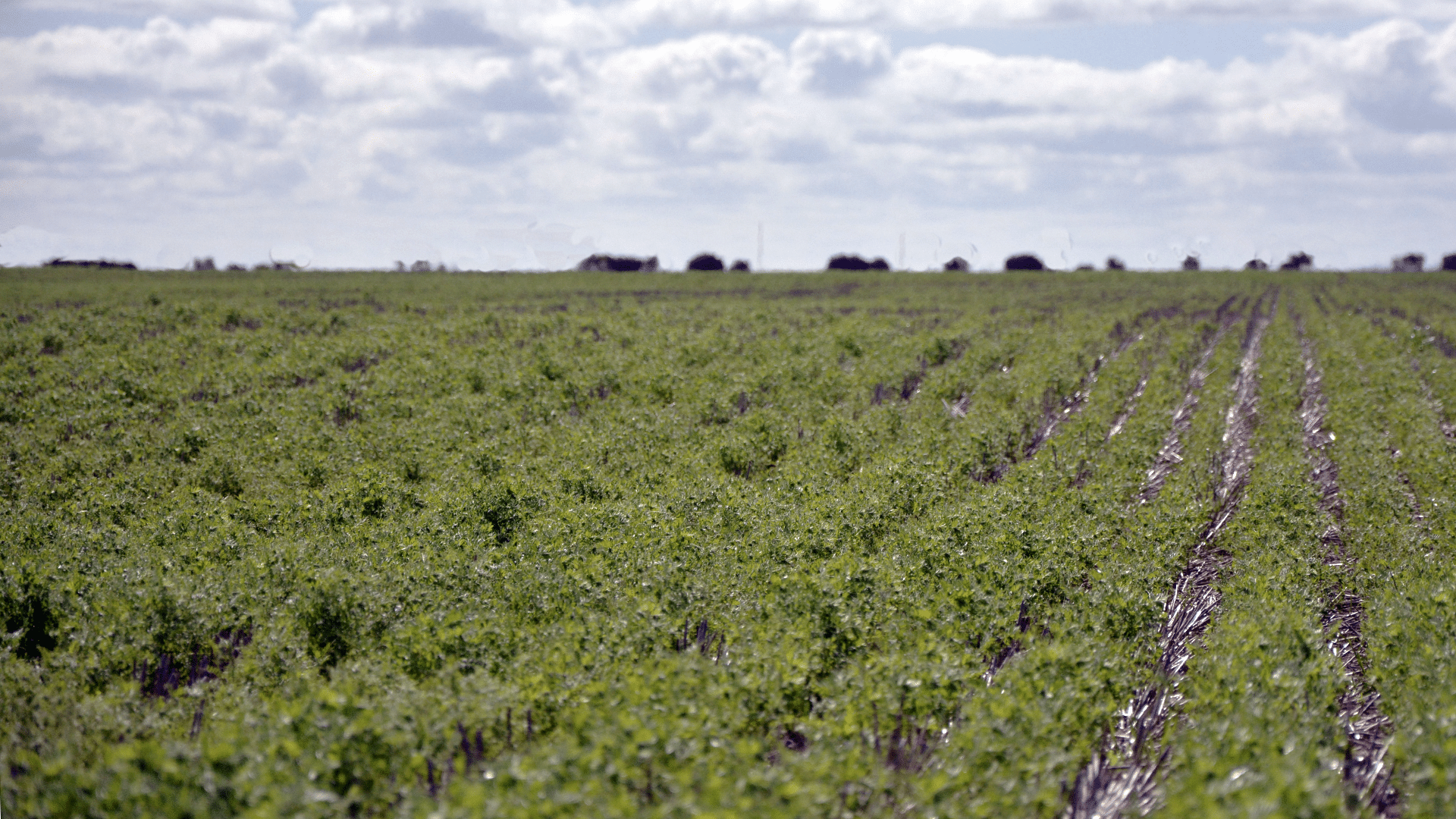START
FINISH
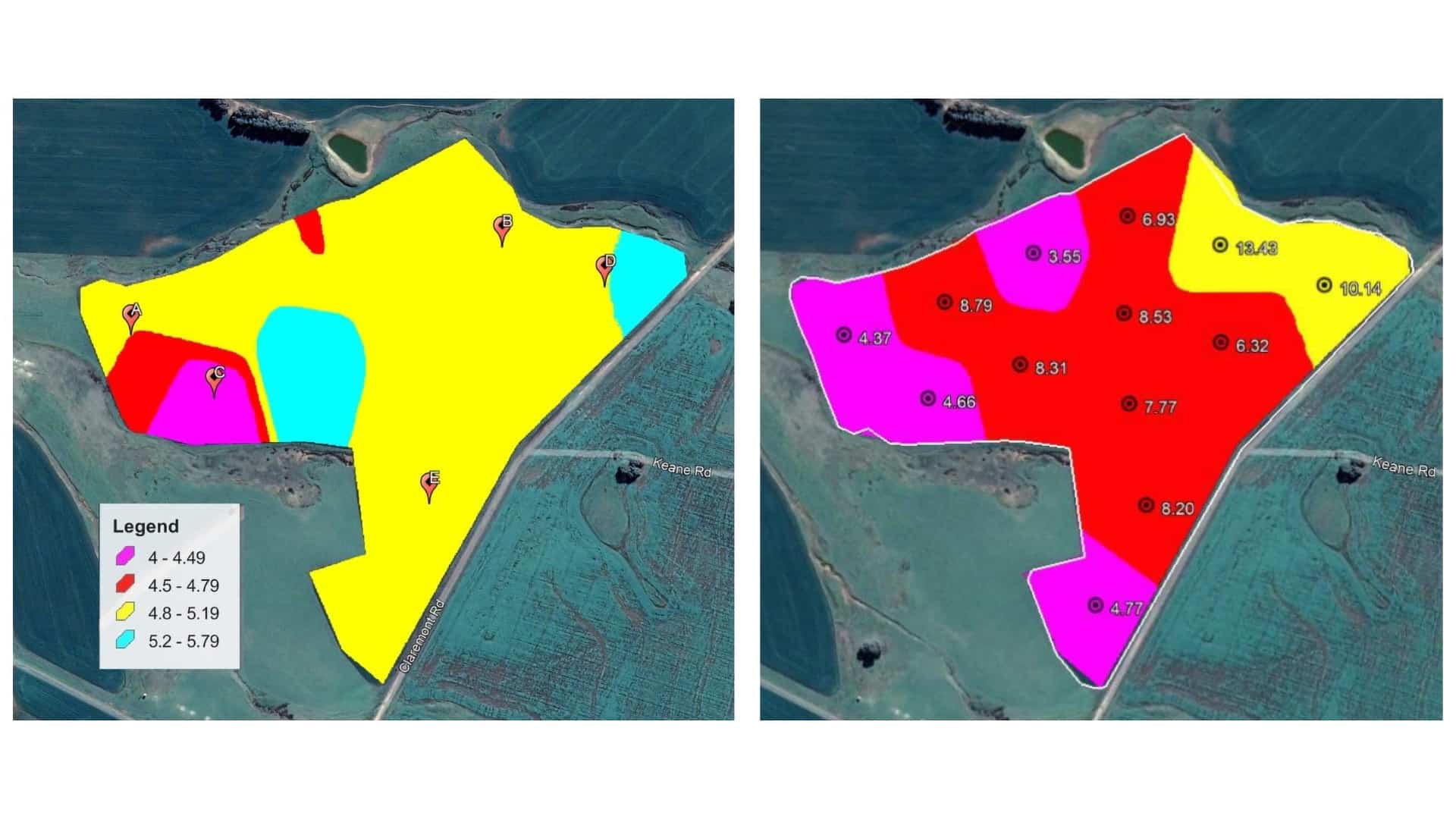
Summary
Acid strata in subsurface soils is difficult to detect without time consuming sampling to depth. Advances in soil sampling and mapping technologies offer options to streamline the identification of at-risk areas in paddocks.
Sampling at 146 sites over 18 paddocks across the Mid North found surface pH and EM38 mapping were both poor indicators of subsurface acidity. However, surface cation exchange capacity (CEC) was found to have strong correlation with subsurface acid banding.
This suggests CEC mapping could be a convenient indicator of locations needing detailed pH testing to depth.
Background
Subsurface soil acidity and acid soil stratification are major problems for South Australian farming. The Department for Environment and Water estimates about two million hectares of South Australian cropping country is threatened by soil acidification. Without remedial intervention, this area could double over the next 40 years. While pH mapping of surface soils has advanced rapidly in recent years, mapping pH in the 10 to 20 centimetre layer is time consuming and labour intensive.
This project set out to establish how subsoil acidity correlated to topsoil pH mapping and other soil mapping datasets (e.g. EM38, elevation) to help growers strategically target subsoil pH sampling and subsequent amelioration.
Research Aims
The core objective of this project was to increase the capacity of growers and advisers in the Mid North High Rainfall Zone (MNHRZ) to cost-effectively measure, target and manage sub-surface acidity.
In The Field
The study covered 18 paddocks across the MNHRZ and these were categorised as (1) unmapped with no liming history; (2) recently pH mapped but un-limed for at least 12 months previously; and (3) pH mapped and limed three or more years prior.
The first two groups were used to measure subsoil acidification in untreated paddocks and correlate the results with other mapping technologies, while the group 3 sites were used to measure the effects of liming for correcting topsoil and subsoil acidification.
A total of 146 sites were sampled. Previously unmapped paddocks (group 1) were sampled at 0-10 centimetres across transects of a 2-hectare grid and selected grid squares were sampled at 0-5, 5-10, 10-15 and 15-20cm depths. Previously mapped paddocks (groups 2 and 3) were sampled to depth in the same 5cm bands at nine points based on existing pH, electrical conductivity (ECa) and elevation data.
Along with soil pH, all samples were analysed for exchangeable cations (Ca, Mg, K, Na) and Cation Exchange Capacity (CEC).
Results
Soil pH was found to vary significantly within paddocks and with depth. All paddocks had areas of significant pH stratification and most paddocks had lower average minimum pH and greater pH variation in the 5-10cm layer than 0-5cm. About 69 per cent of the sample locations (101 of 146) had lower pH at 5-15cm than 0-5cm and 80 per cent were found to reach peak acidity in the 5-10cm layer.
Neither EM38 nor radiometric gamma radiation proved reliable predictors of subsurface acidity. However, 0-10cm CEC data achieved better than 80 per cent correlation in 16 of 18 paddocks. Specifically, where CEC in the top 10cm is below 20 cmol(+)/kg, subsurface acidity is likely to be present at depths of 5-15cm.
This is consistent with the relationship between soil pH buffering capacity and CEC.
The sampling also showed that if 0-10cm soil pH(Ca) is below about 5.6, acid stratification is likely, even if lime has been applied in the past.
Project Participants
Precision Agriculture: Dr. Murray Hart, Dr. Kirsten Barlow, Adam Brinkmann
Mid North High Rainfall Zone Grower Group: Jarred Tilley
Growers: Craig Jaeschke, Jack Hanbury, Dane Sommerville, Jim Maitland, Angus Stockman, Richard Sandow, Kym l’Anson, Ben Plueckhahn, Ben Marshman, Frank McInerney, Sam Prizabella, Mick Faulkner, Andrew Bruce
The Problem
Subsurface soil acidification impacts crop growth, but comprehensively testing soil pH in paddocks to depth is slow and labour intensive.
The research
pH, EM38, CEC and elevation mapping technologies were assessed for their ability to indicate areas warranting subsurface pH testing.
More information
Adam Brinkman, Precision Agriculture
T: 0459 276 882
E: [email protected]
Value for Growers
This project has demonstrated the value of different soil sampling technologies for efficiently indicating the likelihood and location of subsurface acid strata. It also showed the EM38 ECa data and pH measurements in the 0-10cm layer are poor indicators of subsurface pH.
This information can help growers in the MNHRZ save time and labour in detecting and then ameliorating subsurface acid bands.
Preliminary findings were communicated to growers at two MNHRZ workshops at Riverton in March and July 2022. Information was also shared via newsletters to approximately 1500 growers in total.
Two project case studies have been published on the Precision Agriculture website.

